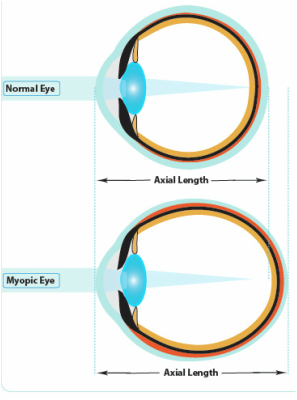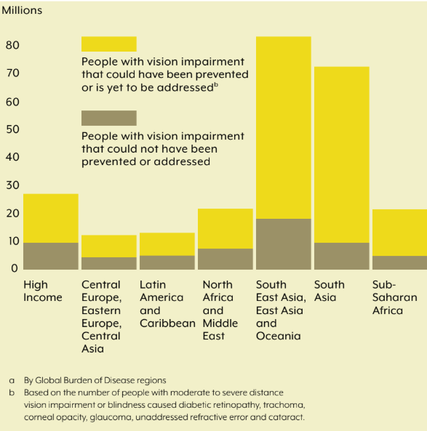Research Topics and Background
What is Myopia?
The main focus of our research is refractive development and myopia (short-sightedness). Myopia is a very common ocular disorder, with significant impact on health care costs, related to its management with spectacles, contact lenses and refractive surgery, and to the treatment of its complications, high myopia being a leading cause of blindness.
The main focus of our research is refractive development and myopia (short-sightedness). Myopia is a very common ocular disorder, with significant impact on health care costs, related to its management with spectacles, contact lenses and refractive surgery, and to the treatment of its complications, high myopia being a leading cause of blindness.
The UC Berkeley Myopia Research is a multidisciplinary group of vision scientists and clinician scientists brought together by a shared interest in solving the myopia epidemic. Key to progress is an improved understanding of the development and progression of myopia. Our research activities address both basic and applied clinical questions, and make use of animal models, as well as clinical human studies. The overall emphasis of our research is translational.
Our lab uses both a chick and guinea pig model to study myopia. Of the many questions waiting to be answered using this model, ones of interest to us:
What aspects of visual experience and associated retinal images underlie myopia?
What are the retinal molecular signals guiding eye growth and how are they relayed from the retina to the choroid and sclera, which define the position of the retina relative to the focal plane of the eye?
How can pharmacology be applied to inhibit myopic growth in ways suitable for use in humans?
Our lab uses both a chick and guinea pig model to study myopia. Of the many questions waiting to be answered using this model, ones of interest to us:
What aspects of visual experience and associated retinal images underlie myopia?
What are the retinal molecular signals guiding eye growth and how are they relayed from the retina to the choroid and sclera, which define the position of the retina relative to the focal plane of the eye?
How can pharmacology be applied to inhibit myopic growth in ways suitable for use in humans?

We also do human-based clinical research to better understand and optimize the optical and pharmacological myopia control treatments available in clinic. Using new technologies, including wearable devices, we are understanding the role of human behavior in the development of myopia. Through this work, many questions are ripe for answering, such as:
What are the environmental behaviors that contribute to myopia?
How do the choroid and sclera contribute to emmetropization?
What treatments can be done to stop the progression of myopia?
What is the role of optical aberrations in myopia development?
What are the environmental behaviors that contribute to myopia?
How do the choroid and sclera contribute to emmetropization?
What treatments can be done to stop the progression of myopia?
What is the role of optical aberrations in myopia development?


